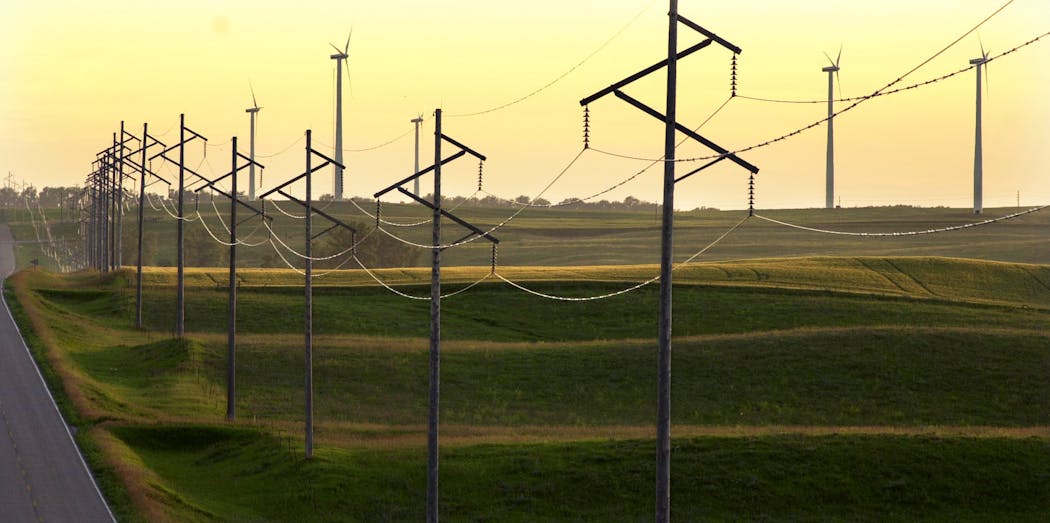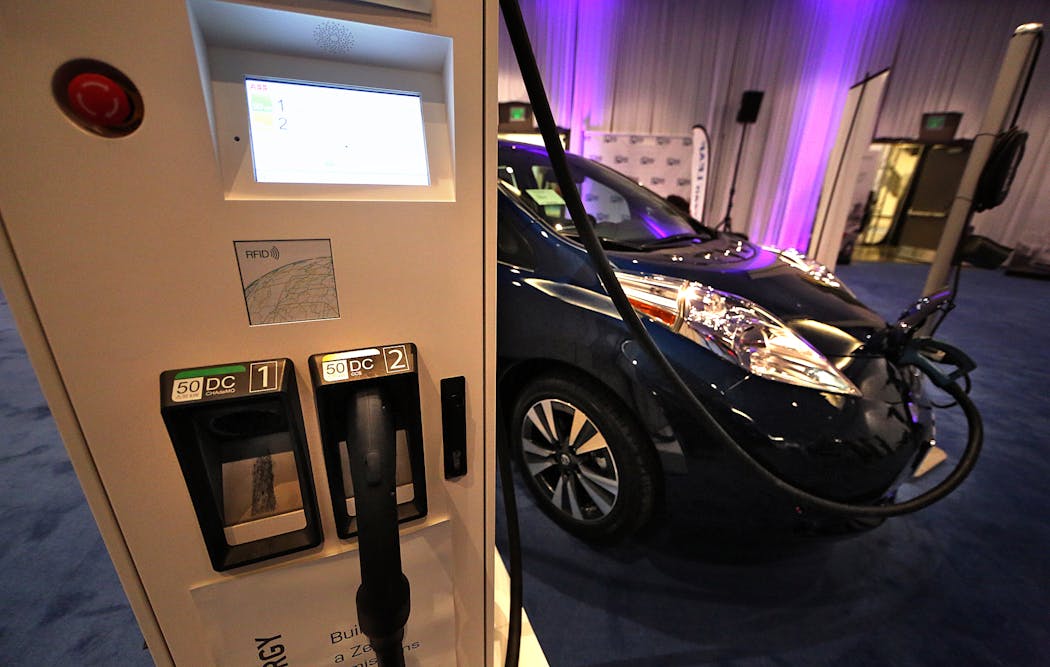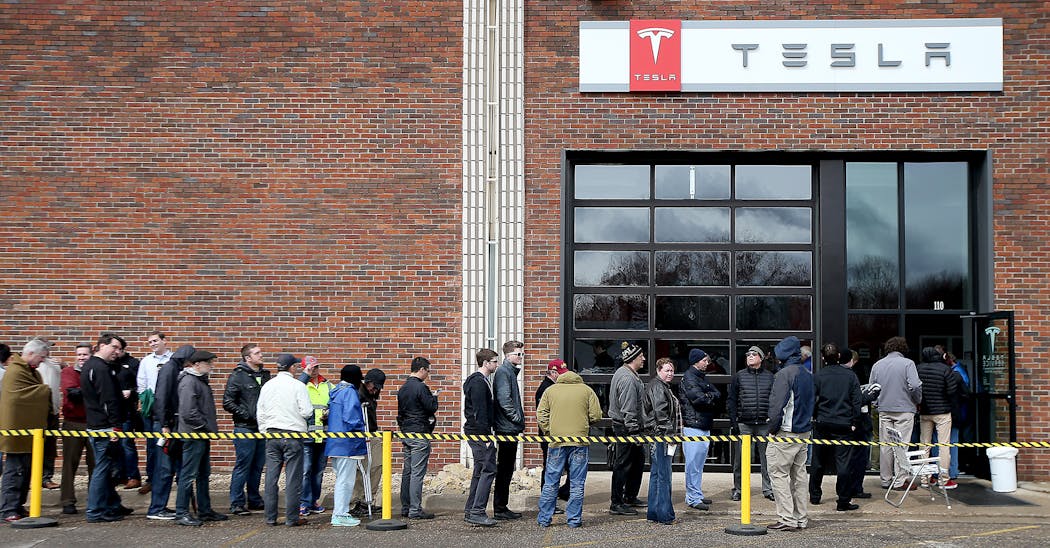Is Minnesota's power grid ready for widespread electric cars?
Listen and subscribe to our podcast: Via Apple Podcasts | Spotify | Stitcher
The number of electric cars cruising Minnesota roadways is growing rapidly every year, spurring new demands on the electrical grid to keep them all charged.
That was on Mark Uglem's mind as he gazed at the gas-powered vehicles peppering driveways in his Champlin subdivision. Can the electrical grid handle the extra draw if those cars were electric and charging simultaneously?
"You'll need so much more juice to run everything," said Uglem, a former Champlin mayor and state representative. "Is Minnesota ready to handle the move to electric vehicles?"
Uglem sought answers from Curious Minnesota, the Star Tribune's community-driven reporting project fueled by great questions from readers.
Electric vehicles still make up a tiny percentage of cars and trucks on the road in Minnesota — only about 18,000 registered vehicles were fully or partly powered by batteries as of February. But that's up from just a few hundred a decade ago.
Large auto manufacturers are jumping on the electric vehicle (EV) bandwagon. By 2040, nearly 60% of all passenger vehicles sold will be electric, according to an analysis by Bloomberg New Energy Finance, an arm of the Bloomberg news and research firm.
Americans drove more than 3.3 trillion miles in 2019, according to the Federal Highway Administration. Fueling that travel with electricity, rather than gas, will require a lot of power.
Like most states, Minnesota is part of a regional grid overseen by an organization that — in simple terms — moves power to where it is needed. The power is delivered locally on utility-owned transmission systems that can become overloaded if there is too much demand.
Minnesota-based electrical utilities Great River Energy and Xcel Energy say they have been investing millions of dollars upgrading transmission lines, transformers and substations over the years partly in anticipation of increased demand. And they will continue to do so, said Chris Clark, president of Xcel Energy operations in Minnesota.
"It's less about how many plug in, but when they plug in," said David Ranallo, Great River's director of culture, communications and member services. The key, he said, is to encourage EV owners to charge during off-peak hours when the system has excess power.
As an incentive, Great River and Xcel Energy offer lower rates during overnight hours when power consumption is lower and the majority of electric car charging takes place.
A majority of EV owners charge their vehicles at home, and can do so using standard outlets they already have, said Tim Sexton, assistant commissioner for Sustainability and Public Health for the Minnesota Department of Transportation.
It can be a slow process, as every hour of charging provides enough energy for a car to go about 25 miles. But for about $1,000, car owners can install a faster charger with higher voltage that provides enough charge for most daily driving needs in 2 to 4 hours. The average driver goes less than 80 miles a day. It takes about 8 hours to fully charge a battery, he said.
The average EV owner uses about 4,000 to 5,000 kilowatt hours annually to charge their vehicle, according to the Minnesota Public Utilities Commission. By comparison, the average Minnesota household consumes about 9,200 kilowatt hours per year, according to the U.S. Energy Information Administration. The commission concluded that significant growth in EVs is necessary before it would noticeably impact electric consumption.
That gives power companies even more time to ramp up.
Sexton owns two EVs and said his electric bill has gone up by $50 to $75 a month. That increase has been offset by not having to pay at the pump, he said. His electricity costs are equivalent to buying gas at $1.16 a gallon.
Electricity is cheaper than fossil fuel, said Clark, of Xcel Energy. Even though more money will be flowing to utility companies, he said, "we save customers money as we shift to electric vehicles. The other win is for the environment."
The Minnesota Department of Transportation said its goal is to have 20% of vehicles on the road be electric by 2030.
EVs can travel up to 300 miles on a single charge, which can produce "range anxiety," the fear of running out of power. But most drivers travel fewer than 80 miles a day. Those fears can be allayed as charging stations are becoming more ubiquitous, popping up at grocery stores, libraries, and work places.
"People can use them while doing their daily routine," said Brendan Jordan, vice president of Transportation and Fuels for the Great Plains Institute and Drive Electric Minnesota, nonprofits working to accelerate the adoption of electric vehicles in Minnesota. "There are a lot more options to charge."
President Joe Biden has promised to have at least 500,000 of the charging devices installed across the U.S. by 2030.
The Minnesota Pollution Control Agency (MPCA) is planning to spend a portion of the air pollution settlement funds it received from Volkswagen to install 43 charging stations across the state — on top of the more than 1,100 public charging stations already operating.
"I think Minnesota is getting more and more ready," Sexton said. "You can travel around the state with electric vehicles pretty conveniently. Minnesota could be a leader in the Midwest."
If you'd like to submit a Curious Minnesota question, fill out the form below:
Read more Curious Minnesota stories:
How much are electric vehicles affected by Minnesota's extreme cold?
Should you really let your car run on cold mornings before driving it?
Why are vehicle tabs more expensive in Minnesota than in other states?
Are roundabouts really safer than traditional intersections?
Why can't Minnesotans figure out how to zipper merge?
Correction: An earlier version of this story misstated which entity has a 2030 goal for electric vehicles on Minnesota roadways. It is the Minnesota Department of Transportation. An earlier version of this story misstated that fast chargers provide a fully-charged battery in 2 to 4 hours. That is how much charging is required for most daily driving needs.






